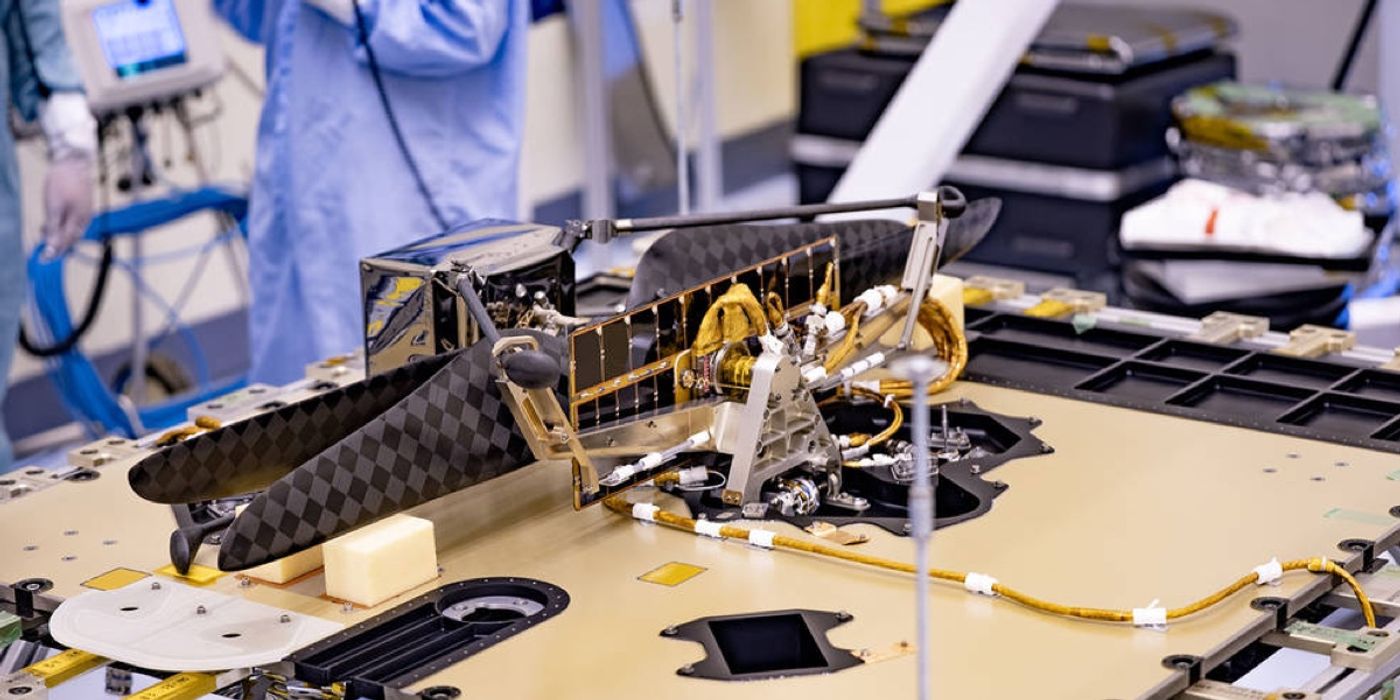NASA Attaches Autonomous Helicopter to Perseverance Rover
Those paying any attention to NASA’s periodic updates during these past several weeks should have perceived what seems like an unusually rapid progression of evolvement for the upcoming Martian Perseverance rover (formerly called the Mars 2020 rover before getting renamed last month).
Just a couple of weeks ago, NASA installed the mission’s Adaptive Caching Assembly and Bit Carousel, which will work in unison to help Perseverance drill into the Martian surface and analyze the samples it collects. A few weeks later, NASA fitted Perseverance with its wheels and parachute system that will fly to Mars with the mission to ensure safe travels. But even that wasn’t the end of the assembly line…
Image Credit: NASA/JPL-Caltech
Just this past week, Perseverance received preparations for yet another vital mission component: the autonomous helicopter. For those that don’t already know, this fully autonomous helicopter will regularly scout the rover’s surroundings on the red planet to help mission scientists ascertain where the rover should go next after completing primary objectives at the locations it visits.
Related: It’s finally the year of the Mars 2020 mission
While it was initially installed back in September, the installation was mostly temporary as NASA still needed to prepare electrical connections and the likes. This past week saw this achievement come into focus…
Weighing just around four pounds, the autonomous helicopter is solar-powered and sports lightweight carbon fiber rotors that measure almost four feet in diameter. The installation into Perseverance’s belly encompassed the process of ensuring that all the electrical contacts between the helicopter and the rover worked and that the delivery system would launch the helicopter into the Martian air successfully.
In addition to implementing the autonomous helicopter, NASA engineers also prepared the Perseverance rover’s decent stage by filling each of its four fuel tanks with 884 pounds’ worth of propellant. The descent stage is intended to slow the rover’s fall as it enters Mars’ atmosphere, and to divert its landing if necessary if the landing site isn’t quite as ideal as initially thought.
"The last hundred days before any Mars launch is chock-full of significant milestones," said David Gruel, the man at NASA responsible for overseeing the Mars 2020 project. "Fueling the descent stage is a big step. While we will continue to test and evaluate its performance as we move forward with launch preparations, it is now ready to fulfill its mission of placing Perseverance on the surface on Mars."
Related: NASA’s Perseverance rover will have the best camera system of any Martian rover to date
NASA currently targets a launch sometime this Summer in order to take full advantage of the time and fuel-saving Hohmann Transfer Orbit – an event only made possible when both the Earth and Mars reside closest to one another in their respective orbits around the Sun. With the launch window rapidly approaching, it may come as no surprise that the American space agency is working overtime to complete the project on time.
Hopefully all this time and effort yields some important science. But only time will tell for certain.
Source: NASA









